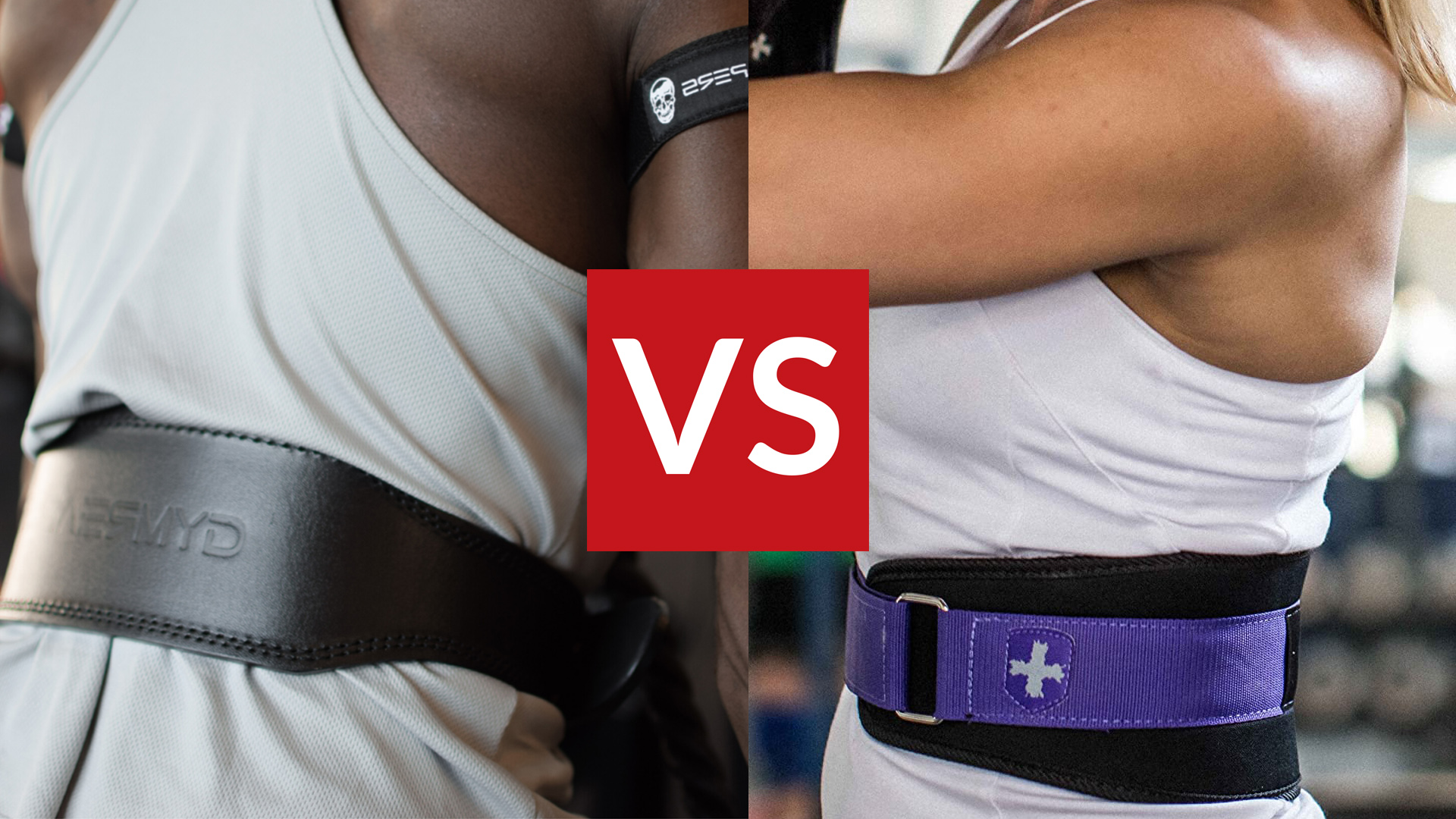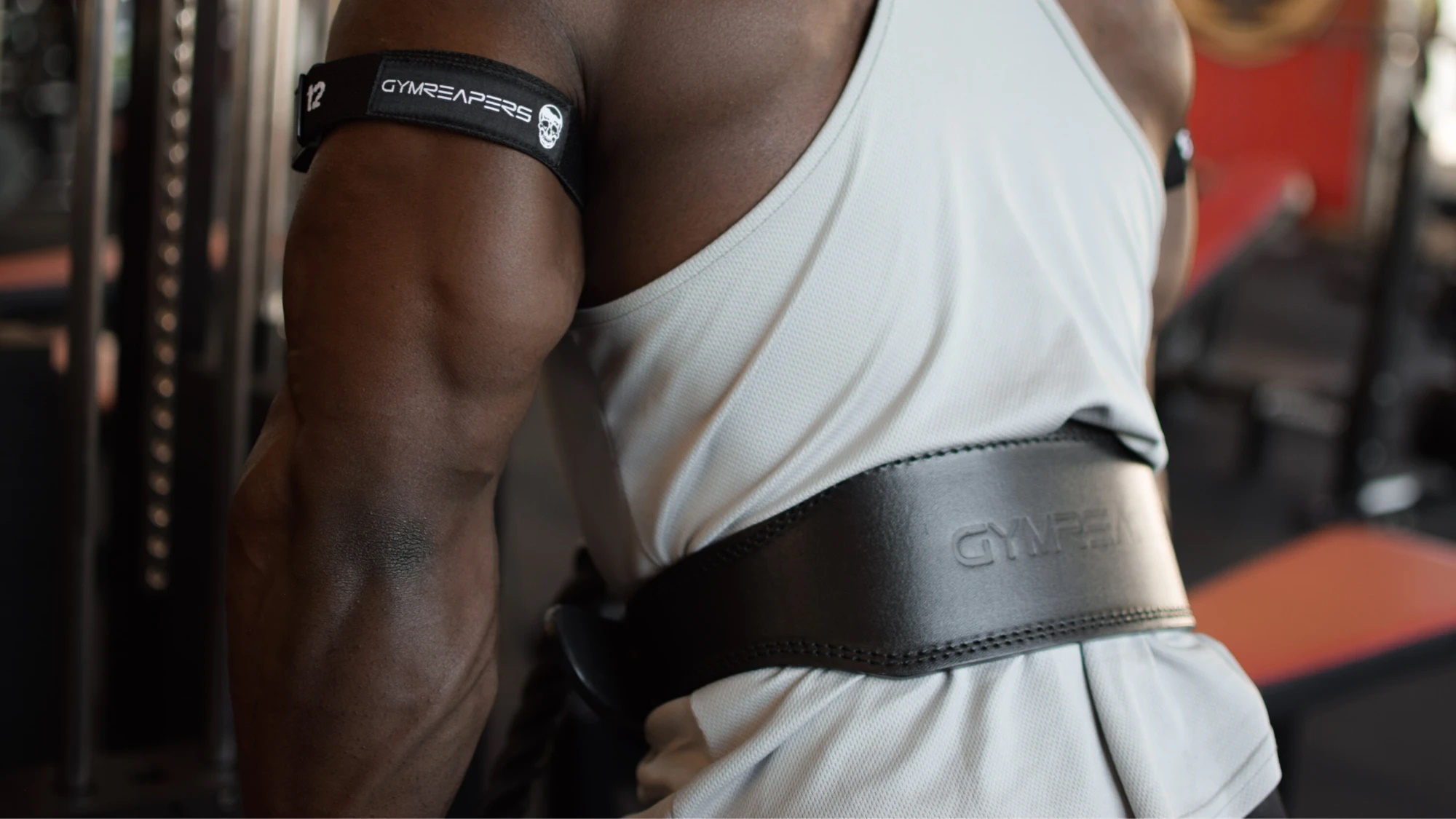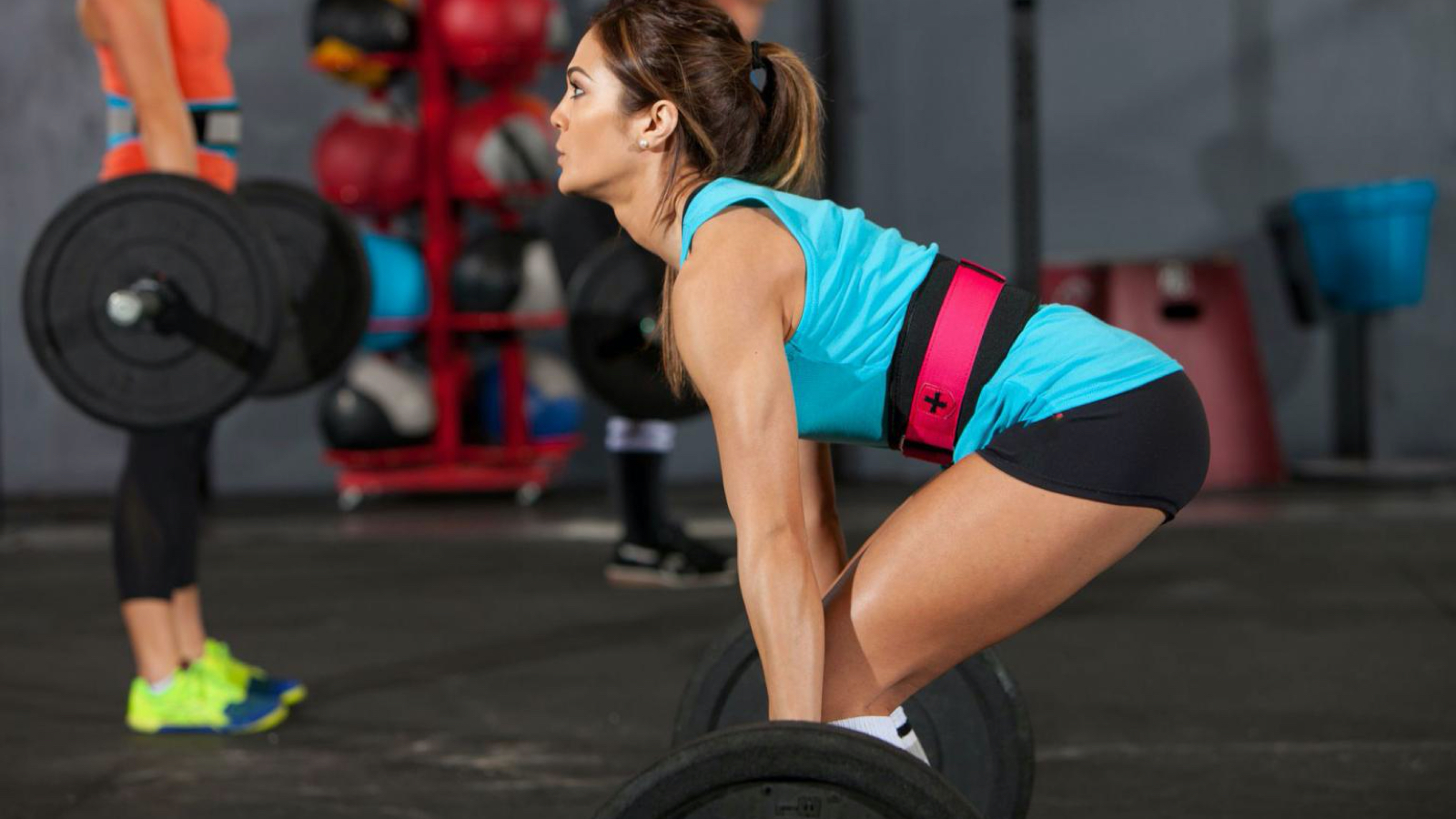

Which type of lifting belt should you get: leather or velcro? Should you get a lifting belt in the first place? What do they do? And, most importantly, does wearing a lifting belt enable you to lift, like, real heavy? Or are they just fashion accessories for meat heads in the gym to look even tougher and emphasise their V-taper?
While the best weightlifting belts can indeed emphasise the V-shape of a back that's as wide as the loading platform of a small truck, they are very different from the leather belts you use to keep your trousers from falling down. When used correctly, lifting belts can help keeping your guts in check when they need a little extra support, especially during heavy deadlifts and weighted squats.
When should you use start using a weightlifting belt? And should you get a leather or a velcro belt? Let's discuss.
(have even more weightlifting belt related questions? We answered most of them here: Weightlifting belt – what does it do plus when and how should you wear it?)
Leather vs velcro weightlifting belts: back to basics
I remember when I started going to the gym and because I really wanted to include a deadlifts in my gym workouts I thought I should get a weightlifting belt straight away: after all, deadlifts are heavy so I'm sure I'll be able to lift even heavier wearing a 6-inch leather belt!
Only after pulling my lower back a couple of times doing deadlifts whilst wearing the belt have I realised that wearing a lifting belt will never replace good form when doing heavy lifts. It's not like I purposefully tried to perform deadlifts with the wrong form, but it's not like you can just keep on throwing 10 kg extra on the bars every week and expect the belt to do the heavy lifting for you.
Another thing I realised was that there is no need to wear a heavy-a** leather belt when all you do is (comparatively) low weight deadlifts and squats. I was lifting less than 1.5x my bodyweight on deadlifts and putting the thick belt on actually made me uncomfortable when I was in the starting position of the deadlift.
Sign up to the T3 newsletter for smarter living straight to your inbox
Get all the latest news, reviews, deals and buying guides on gorgeous tech, home and active products from the T3 experts

Not to mention, carrying a stiff leather weight lifting belt is a PITA as it takes up huge amount of space in your gym bag. Some bags have dedicated external storage for belts – see King Kong's Core range for more info – but from a convenience point of view, I'd recommend not getting a leather belt, especially the thicker, 6-inch variety, until you start lifting seriously heavy weights.
Velcro belts will provide more than adequate support for the moderate weights you lift at the beginning. I know what you're thinking: "But Matt, if I'll have to buy a leather belt eventually, I might as well just cut back on costs and get one straight away?"
Can't argue with that logic! However, you won't need the amount of support a 6-inch leather belt provides for a long time and by then, spending some more money or a more advanced belt will not feel all that substantial. Progress in the gym doesn't happen overnight and although you might think that your 'newbie gains' in the first year or so will help you deadlift as much as The Mountain does – the current deadlift record holder with 501 kg – but it's more likely you'll max out somewhere around 100+ kilos on deadlift.

Long story short: for beginner lifters, getting a velcro belt is definitely the more sensible option, as well as working on your core strength by doing the best core exercises. They are more convenient to carry around and more comfortable to wear yet provide enough support to see you through in the first phase of your lifting career.
Neoprene belts also allow for more freedom of movement, making them a better option for dynamic movements such as snatches and swings etc.
Once you get to the point where you start doing deadlifts with twice and squats with one-and-a-half-times your bodyweight, you should consider upgrading your weightlifting belt to a 'proper' leather belt. It's likely your form and your core strength will be on point by then but these heavy weights will have a toll on the body nevertheless so supplementing your efforts with a sturdier belt is a good idea.
Whether you should get a four- or a six-inch belt, it depends on your body type and height. The wider 6-inch belt will cover a larger surface area and provide more support but it's a bit of an overkill if it covers half your back. For most people, a 4-inch belt will be more than enough.

Matt Kollat is a journalist and content creator who works for T3.com and its magazine counterpart as an Active Editor. His areas of expertise include wearables, drones, fitness equipment, nutrition and outdoor gear. He joined T3 in 2019. His byline appears in several publications, including Techradar and Fit&Well, and more. Matt also collaborated with other content creators (e.g. Garage Gym Reviews) and judged many awards, such as the European Specialist Sports Nutrition Alliance's ESSNawards. When he isn't working out, running or cycling, you'll find him roaming the countryside and trying out new podcasting and content creation equipment.
-
 I've tested DS & Durga Brown Flowers – it's killer spring scent for everyone
I've tested DS & Durga Brown Flowers – it's killer spring scent for everyoneJust about the floweriest fragrance a fella could wear
By Sam Cross
-
 The 5 most efficient exercises for adding strength and size
The 5 most efficient exercises for adding strength and sizeExercise Scientist Dr. Mike Israetel says these are the lifts you should prioritise if you want to get jacked and strong
By Bryony Firth-Bernard